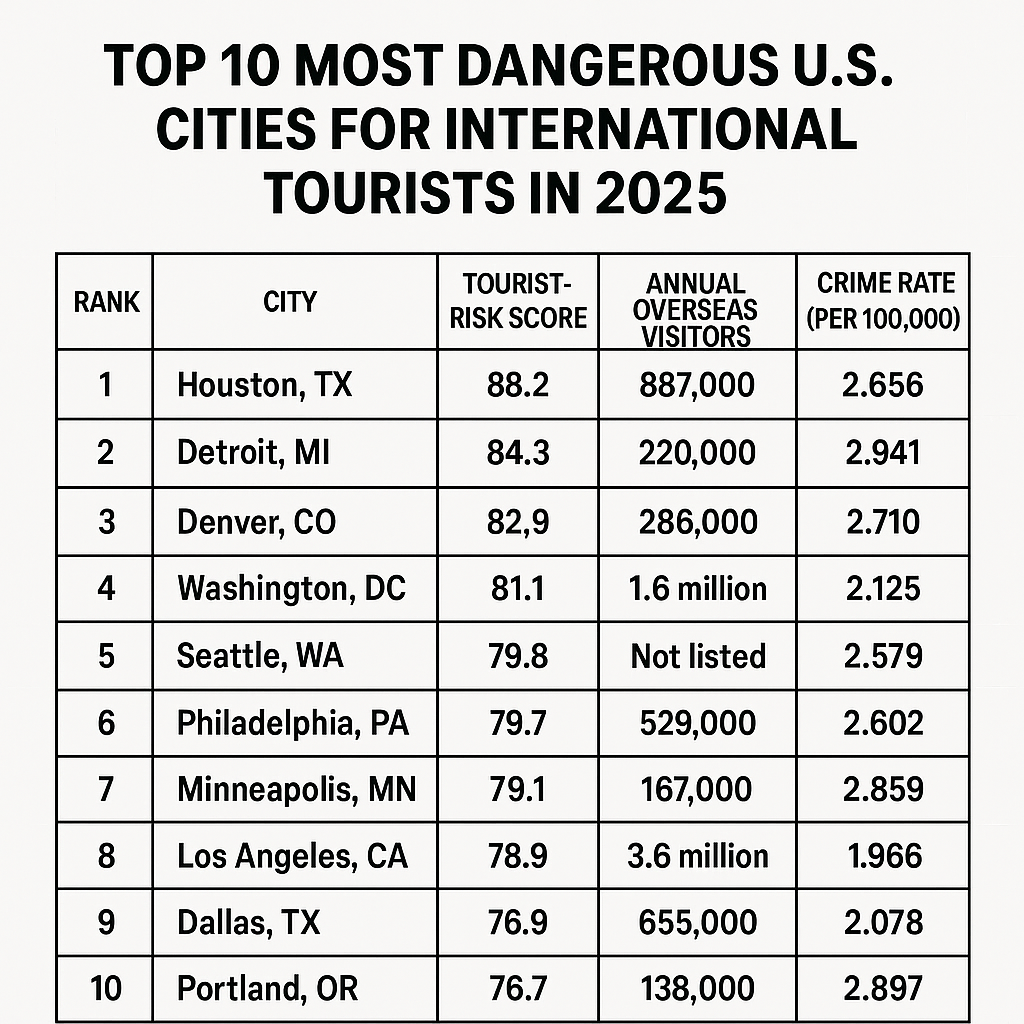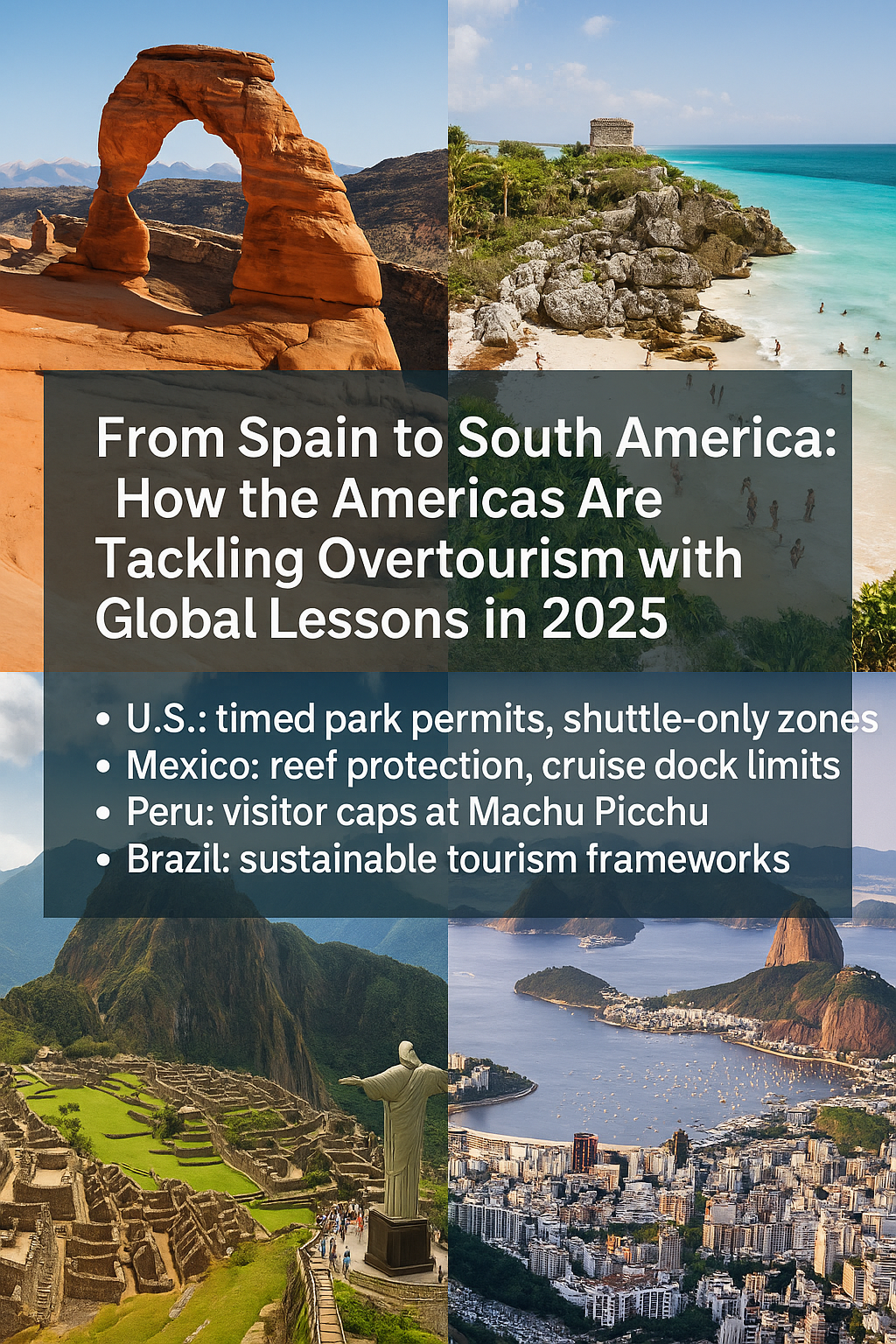Once the challenge of ancient cities like Venice or the beaches of Bali, overtourism has gone global—and the Americas are now in the spotlight. From U.S. national parks to Mexico’s coastline, from Machu Picchu to the streets of Rio, 2025 is shaping up to be a decisive year in the battle to make tourism sustainable.
Countries across North and South America are drawing inspiration from Europe and Asia—places already familiar with the costs of overcrowded destinations. Now, the Americas are crafting bold new strategies to protect local communities and environments without sacrificing the economic benefits of tourism.
U.S. National Parks Embrace Permits and Digital Tools
In the United States, record-breaking visitation to national parks like Yellowstone, Yosemite, and Zion has spurred a transition to tech-enabled crowd management. New timed-entry systems and shuttle-only zones aim to reduce congestion and environmental degradation.
Visitors to Arches National Park in Utah, for instance, now require advance permits, while Zion Canyon limits access to shuttle users only. Social media campaigns by the National Park Service also encourage off-peak travel and educate visitors on Leave No Trace principles. Yet, the challenge persists: can the U.S. maintain accessibility without damaging its treasured landscapes?
Canada Rethinks Island and Mountain Tourism
Canada’s Prince Edward Island (PEI) and its iconic Rocky Mountain parks are struggling to accommodate surging seasonal tourism. Local residents in Banff and Jasper report housing shortages and ecological strain.
Tourism boards are promoting travel to under-the-radar regions like Northern Quebec and Yukon, while municipalities consider caps on short-term rentals to preserve housing for locals. Much like Portugal’s push to diversify tourism zones, Canada is strategically redirecting tourist flow.
Mexico Moves to Protect Reefs and Regulate Cruise Tourism
In Mexico, coastal hotspots like Cancún, Tulum, and Cozumel are experiencing the environmental costs of unchecked development and cruise tourism. Coral bleaching, beach erosion, and trash overflow are now top national concerns.
To combat this, Mexican authorities have begun implementing visitor limits in protected marine zones, regulating cruise dockings, and promoting ecotourism inland. Tulum National Park, for example, is testing daily caps similar to those used in Italy’s Cinque Terre.
Peru’s Machu Picchu: A Model for Heritage Tourism Management
Machu Picchu remains one of the most studied cases in global tourism policy. Since visitor numbers ballooned past 5,000 per day pre-pandemic, Peru has adopted a quota-based entry system, requiring all foreign tourists to hire local guides and purchase time-specific tickets.
Inspired by Japan’s Mt. Fuji hiking caps and UNESCO pressure, the Peruvian government now aims to lower daily visitors even further—to around 2,500. These efforts not only safeguard the Inca site but also boost tourism job quality in nearby towns like Cusco and Ollantaytambo.
Brazil: Watching Global Models, Planning Ahead
While Brazil has not yet reached the overtourism tipping point, signs of stress are emerging at major attractions like Christ the Redeemer and Iguaçu Falls. Recognizing these risks, Brazil is proactively studying international models from Spain, Bhutan, and Indonesia.
Proposals include limiting visitor flow during major holidays, restricting cruise tourism in sensitive areas, and promoting biodiversity education in the Amazon. The Ministry of Tourism has partnered with conservation NGOs to develop visitor impact monitoring tools for 2026 and beyond.
The Caribbean: Managing the Cruise Economy Carefully
Small island nations in the Caribbean, including Jamaica, Barbados, and the Dominican Republic, have begun reassessing their dependence on cruise ship arrivals. These floating cities often bring thousands of tourists for a few short hours, creating immense pressure on fragile infrastructure without delivering long-term spending benefits.
Some islands are experimenting with daily port limits and destination fees, echoing Indonesia’s entrance charge for Komodo Island and Spain’s €5 day-tripper fee in Venice. Meanwhile, community-based tourism is gaining traction as a low-impact, high-reward alternative.
Spain’s Málaga Sets an Example in Urban Regulation
No global overview is complete without looking to Spain, where Málaga has introduced a code of conduct for tourists that includes strict dress codes, noise control, and hefty fines for rule-breakers—up to €750. It’s part of a broader national campaign to rebalance tourism and improve quality of life for residents.
Barcelona is following suit, banning all tourist apartments by 2028, and the Balearic Islands have cracked down on alcohol-fueled party tourism. These bold moves are being watched closely in cities like New York, Vancouver, and Rio, which face their own tensions between tourism and livability.
Technology and Data Drive Future Solutions
In 2025, data is key. Parks Canada uses digital crowd mapping to redirect visitors in real time, while the U.S. employs GPS-based dashboards to determine trail closures and shuttle needs.
Elsewhere, Peru and Indonesia are deploying mobile apps to educate tourists on sensitive ecosystems, while Spain is investing in AI tools that predict visitor surges. These innovations allow for more responsive tourism management without blanket restrictions.
Looking Ahead: Balancing Growth with Preservation
Overtourism is no longer a distant European issue. In 2025, it’s a shared global challenge—and the Americas are stepping up with a blend of imported wisdom and homegrown innovation.
As Spain enforces fines and Italy charges city entry fees, Peru limits access to sacred sites, and Mexico protects reefs, a new era of mindful travel is emerging. Whether through visitor caps, educational campaigns, or smart tourism apps, the message is clear: the future of travel lies in balance—not excess.
For more travel news like this, keep reading Global Travel Wire






















